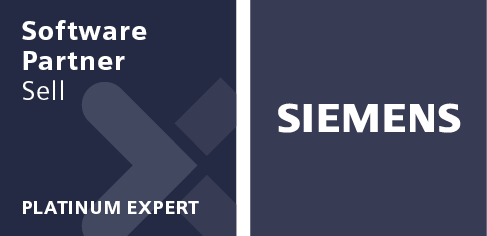Simulation and Test Workshop by Siemens – Specialized Solutions
360E Quality Circle, Huntsville, AL, 35806
Dates: TBD (Likely Late October)

Agenda
Day 1
Click on each session title to see more info about the session.
Speaker: Scott Thibault, SDA Software
A common trend impacting many product manufacturers is that products and product development processes today are much more complex than they used to be.
This includes:
- A shift from traditional mechanical products to smart, connected products – including mechanical, electrical, electronic, and software components
- This leads to the need for a comprehensive Digital Twin to fully model and validate the whole product
- The mandate to manufacture and deliver products faster
- With all this information coming together in a Digital Twin, the complexity and the amount of data becomes difficult to manage and derive actionable insights from.
This is why AI is becoming increasingly important. Artificial Intelligence is defined as “The science of making machines do things that would require intelligence if done by men.” Across Siemens we see Artificial Intelligence enabling new solutions for design, automation, the Internet of Things, quality assurance and even coding and customization of best practices.
Speaker: Hugh Bazzi, Siemens
In this session, you will witness the value that Model Based Systems Engineering (MBSE) delivers to the engineering enterprise, product development, manufacturing, plant operations and product end-users. This discussion will illustrate how Siemens Xcelerator helps customers transition from a disconnected, manual & siloed “Build-then-Integrate” development process to an agile “Integrate-then-Build” paradigm.
The presenter will walk through a multi-domain, requirements driven design verification and validation business process where requirements, parameters, system architecture, geometry, models, and test cases are seamlessly integrated and orchestrated via the Digital Thread and your preferred business process. You will see how the Digital Thread enables the sharing of information between systems, teams, and end-users and across the entire product lifecycle, allowing for real-time insights, continuous integration and improved decision making while reducing the risks and costs of new product development.
At the conclusion of this session, you will understand how the practice of MBSE enabled by Siemens’ Partners and Siemens Xcelerator can help your organization improve product quality, reduce time to market and cost while enhancing communication and traceability throughout the product’s lifecycle. Examples of customer digital transformations will illustrate how MBSE is turning product, development and organizational complexity into a competitive advantage.
Speaker: Bob Ransijn, Siemens
System simulation can be used to investigate all applicable system level architectures and is critical in accelerating early-stage conceptual designs for entire systems. There are ways to improve a typical design process by generating multiple design alternatives using a Generative Engineering process.
Generative Engineering leverages patented AI-based technology to automatically generate and compare design alternatives for mechatronic systems, starting from high-level user requirements. As the Generative Engineering approach can guarantee that all design alternatives corresponding to a particular model have been generated, this approach counteracts design fixation and ensures that the most interesting architecture (design) may be discovered. In this session, we will show the latest in Siemens system simulation and how AI is leveraged to accelerate this process.
Speaker: May Taylor, Siemens
Speaker: Darren Nunes, Siemens
Simulation-based digital twin models have revolutionized the way we design products and processes. But how can those models be leveraged beyond their original purpose? For example, shifting left in the development process by providing easier ways to explore conceptual designs, or shifting right to inform commissioning, production, operation, and maintenance?
The answer is speed!
Fast-computing and lightweight Digital Twins, such as Reduced Order Models can help expand usages of the Digital Twin, both left and right. AI is one of the methods to generate Reduced Order Models (ROMs).
- AI leverages large datasets to capture patterns and essential dynamics of complex systems, which helps in approximating the behavior of high-fidelity models.
- Machine Learning Algorithms: Techniques like clustering, regression, and neural networks can be used to identify and learn key patterns or features that are critical for accurately predicting system behavior in ROMs.
- Adaptive Learning: AI can continuously learn and adapt ROMs in real-time as new data becomes available, ensuring the model stays relevant and accurate.
In this presentation, we will show the development and application of reduced order models in relevant examples.
Speakers: Scott Thibault and Matt Chan, SDA Software
We all know that MDAO is the key to designing optimized products. However, it can be prohibitive for CAE simulations due to the high computational costs, model complexity, and extensive resources required to manage multi-dimensional design spaces and ensure convergence. This conflicts with the pressure to save time and reduce costs.
In addition to powerful parametric optimization routines in Simcenter HEEDS, HEEDS AI Simulation Predictor is a performance booster that enhances this state-of-the-art search technology to allow it to provide results even faster. This expedites the search process for time-consuming CAE analyses or when lengthy multi-objective, multi-domain optimizations need to be performed.
HEEDS AI Simulation Predictor empowers users by enabling accuracy-aware AI as part of the hybrid-adaptive search framework, to actively learn and enhance the current search as well as learning for future design processes. It offers a significant reduction in time while maintaining the same design accuracy. Additionally, this new technology allows the re-utilization of prior data, providing valuable insights for designing new products and systems, ultimately saving time and costs.
Speaker: Scott Thibault, SDA Software
Day 2
Click on each session title to see more info about the session.
Speaker: Dr. Brock Birdsong, Auburn University Applied Research Institute
Speaker: Andrew Jabola, SDA Software
Simcenter software provides an integrated platform of design, analysis and manufacturing of laminate composites. In this session, we will discuss and demonstrate the Siemens Fibersim software for laminate composite design and manufacturing together with the simulation workflows, which can be performed in either Femap or Simcenter 3D. This session is appropriate for anyone working with hand-laid or machine-laid fiber composites who needs to accelerate and de-risk the development and manufacturing processes.
Speaker: Scott Thibault, SDA Software and Jon Coulter, Siemens. Others TBD
Simcenter 3D offers a comprehensive, open and integrated portfolio of simulation and test solutions to build digital twin models across many engineering domains with some AI features already in place and more coming. In this session we will cover a number of topics related to Simcenter Structures, which includes Femap, Simcenter 3D, and Simcenter Nastran.
- The birds-eye view of Simcenter 3D – a wealth of applications all enabled by flexible token licensing
- Model correlation and update in Simcenter 3D – making the most of your experimental data to validate and refine your structural models
- New! Zona ZAERO and Femap workflow – see how to model the most common flutter phenomena using an integrated workflow with ZAERO and Femap with Nastran.
At Siemens we are working on the adoption of AI across all phases of engineering, going from early target and requirement setting, to architectural system studies, to detailed 3D simulation whether it be flow/thermal, structural, motion, acoustics or CFD validation.
Speaker: May Taylor, Siemens
Speakers: Peter Schaldenbrand, Siemens and Ramana Kappagantu, Siemens
An executable digital twin (Simcenter Executable Digital Twin) creates a live connection between virtual and real worlds. With Simcenter, you can Maximize simulation ROI by re-using simulation models across the product lifecycle and seamlessly leverage operational data in engineering to improve design (close the loop between design and test). The simulation model or physical test data can utilize rapid modeling techniques, including Reduced Order Modeling (ROM) and Artificial Intelligence (AI).
In this session, using Simcenter Pretest, we will identify the ideal locations to place sensors and excite the system for recovering maximum dynamic information. These locations are then employed in real world Modal Testing. We will then show how the Correlation module qualifies the finite element model using metrics like MAC and X-Ortho. We will show how modal sensitivities are captured for potential design variables in the model and quickly update the model to minimize the gaps with test reference.
Using an updated model, we will introduce the concept of Smart Virtual Sensors for optimally locating strain gages and estimating loads from measured strains. We will briefly touch upon using these loads for durability, acoustics, and other purposes.
Speaker 1 (STAR-CCM+): Matt Chan, SDA Software
Speaker 2 (FloEFD): Chris Watson, Siemens
AI has transformed technologies in every industry. Applying AI to CFD applications can be a strategic asset to companies, as it can help reduce costs and create new differentiated values. AI-driven smart solutions offer substantial benefits to CFD engineers, designers, and analysts such as:
- Reduce computational, design program, and operational costs by creating more designs per simulation at a faster turnaround time
- Reduce the process and program development turnaround time with ML based surrogate models and smart AI driven workflows to expedite turnaround time
- Enhance the accuracy of simulations by flagging anomalies and providing knowledgebase workflow assistance in the CFD process. This includes CAD, physics modeling, mesh settings, and postprocessing.
Matt Chan from SDA Software will demonstrate the modeling of a low subsonic aircraft using Siemens industry-leading, general-purpose multiphysics CFD software, STAR-CCM+
Chris Watson, from Siemens, will then show the latest in CAD-embedded CFD with FloEFD, available standalone and embedded within Siemens NX, Siemens Solid Edge, Catia V5, or PTC Creo, with a focus on the ease of modeling complex conjugate heat transfer problems in space and aerospace applications.
Speaker: Charles Sousou, Siemens
Space is limited and advance registration is required. Your registration fee reserves your space and also covers breakfast and lunch both days, refreshments during the day, plus administrative costs. Refunds are available if you cancel by July 21, 2025. Refunds will be issued by check only


